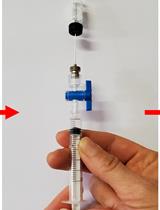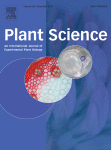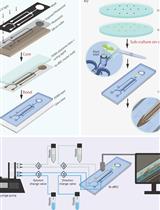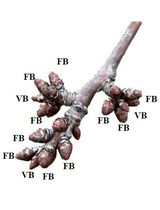- EN - English
- CN - 中文
Protocol for Increasing Carotenoid Levels in the Roots of Citrus Plants
提高柑橘植物根中类胡萝卜素含量的实验方案
发布: 2016年12月20日第6卷第24期 DOI: 10.21769/BioProtoc.2077 浏览次数: 8435
评审: Scott A M McAdamLaia ArmengotAnonymous reviewer(s)

相关实验方案

使用气相色谱和火焰离子化检测技术对亚热带乔木作物荔枝(Litchi chinensis Sonn.)叶和芽组织中乙烯产量进行定量分析
Regina B. Cronje and Arnoldus J. Jonker
2023年03月20日 1430 阅读
Abstract
Carotenoids in plants play several key functions such as acting as light-harvesters, antioxidants (Lado et al., 2016) or being precursors of strigolactones, abscisic acid, volatiles and other signaling compounds (Arbona et al., 2013). Although those functions are well-known in light-exposed tissues, information in belowground organs is limited because of reduced abundance of these pigments. In order to better understand the role of carotenoids in roots, we developed a methodology to increase the abundance of these pigments in underground tissues. We took advantage of the fact that citrus roots exposed to light develop pigmentation in order to increase the carotenoid content. Therefore, here we describe a simple method to increase carotenoids in citrus roots.
Keywords: Abscisic acid (脱落酸)Background
Carotenoid abundance in roots is quite limited and, therefore, understanding the role of these compounds becomes difficult. Exposure of roots to light is a simple, fast and useful tool to increase carotenoid levels in these tissues, especially when compared to other genomic approaches such as overexpressing some key genes of the carotenoid biosynthetic pathway (Cao et al., 2015).
Materials and Reagents
- Pirex® culture tubes 25 x 150 mm
- Disposable syringes (25 ml)
- 1.5 ml Eppendorf tubes
- Citrus seeds (e.g., from a commercial rootstock)
- Murashige and Skoog (MS) medium (4,302.09 mg L−1) (Duchefa Biochemie, catalog number: M0221 )
- Sucrose (30 g L−1) (any supplier)
- Sterile MiliQ-water
- Agar (European Bacteriological Agar) (Conda, Pronadisa, catalog number: 1800 )
- Tween® 20 (0.1% v/v) (Sigma-Aldrich, catalog number: P2287 )
- Myo-inositol (100 mg L−1) (Duchefa Biochemie, catalog number: I0609 )
- Pyridoxine-HCl (1.0 mg L−1) (Duchefa Biochemie, catalog number: P0612 )
- Thiamine-HCl (0.2 mg L−1) (Duchefa Biochemie, catalog number: T0614 )
- Nicotinic acid (0.5 mg L−1) (PANREAC QUÍMICA, catalog number: A0963 )
- Glycine (0.2 mg L−1) (PANREAC QUÍMICA, catalog number: 141340 )
- Mix A (see Recipes)
- Sodium hypochlorite solution (50.0%, v/v) (see Recipes)
- NaOH (0.1 N) (any supplier) (see Recipes)
Equipment
- Pirex® media solution bottles
- Autoclave (Raypa, model: Steam Sterilizer AES-75 )
- Laminar flow hood (Bioquell, ASTEC MICROFLOW, model: Microflow Laminar Flow Workstation M50546 )
- Hooked tweezers
- Growth chamber (Snijders Scientific, model: Economic Lux Climate Chamber )
- Long-handled scissors with curved tip
- pH meter (HACH LANGE SPAIN, model: pH meter Basic 20 )
Procedure
文章信息
版权信息
© 2016 The Authors; exclusive licensee Bio-protocol LLC.
如何引用
Manzi, M., Pitarch-Bielsa, M., Arbona, V. and Gómez-Cadenas, A. (2016). Protocol for Increasing Carotenoid Levels in the Roots of Citrus Plants. Bio-protocol 6(24): e2077. DOI: 10.21769/BioProtoc.2077.
分类
植物科学 > 植物生理学 > 植物生长
生物化学 > 其它化合物 > 类胡萝卜素
您对这篇实验方法有问题吗?
在此处发布您的问题,我们将邀请本文作者来回答。同时,我们会将您的问题发布到Bio-protocol Exchange,以便寻求社区成员的帮助。
提问指南
+ 问题描述
写下详细的问题描述,包括所有有助于他人回答您问题的信息(例如实验过程、条件和相关图像等)。
Share
Bluesky
X
Copy link










